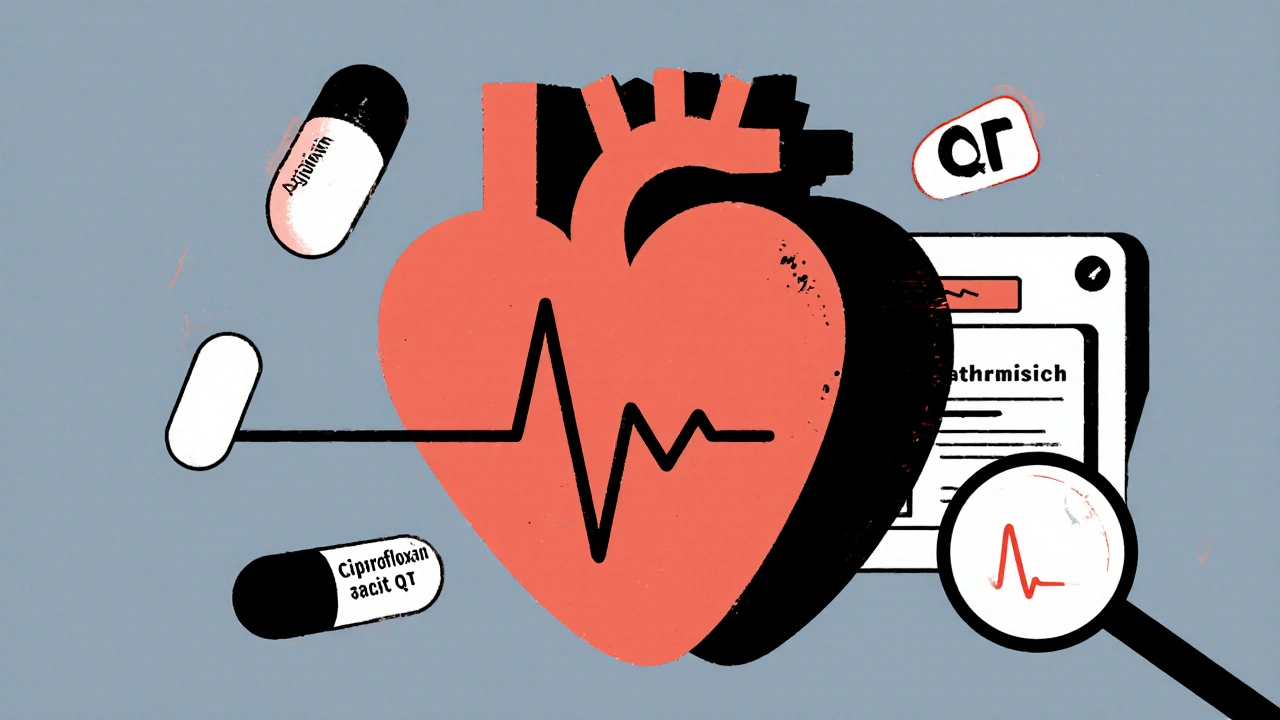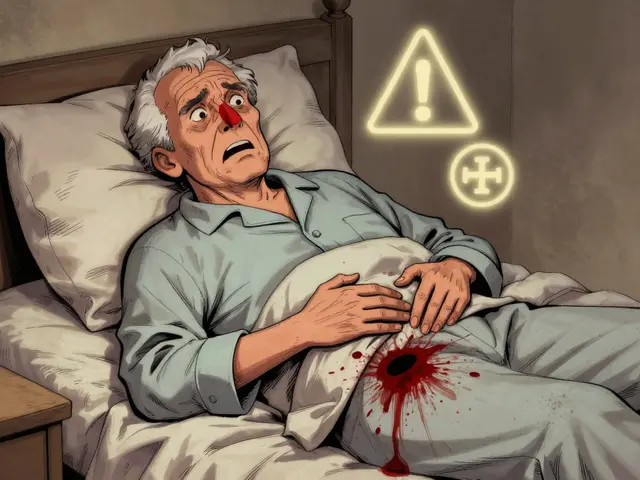Arrhythmia Risk Checker
1. Do you experience sudden palpitations (fluttering in the chest) that last more than a minute?
2. Have you had any episodes of fainting or near‑fainting?
3. Do you have any of these risk factors? (check all that apply)
4. Do you have a family history of heart rhythm problems?
5. Have you noticed shortness of breath during normal activities?
Why Knowing About Heart Rhythm Matters
Imagine watching a film where the soundtrack suddenly skips, speeds up, then slows down erratically. Your heart works the same way when its rhythm goes off‑track. Staying informed about arrhythmia isn’t just a medical curiosity-it's a practical step that can prevent emergencies, guide treatment, and improve everyday wellbeing.
What Is an Arrhythmia?
Arrhythmia is a disorder of the heart’s rhythm that causes it to beat too fast, too slow, or irregularly, affecting millions of people worldwide. It can be fleeting, like a brief palpitations episode, or chronic, requiring long‑term management. The underlying cause is usually a problem with the heart’s electrical system, which normally coordinates each heartbeat with precise timing.
Common Types and Their Impact
Not all arrhythmias are created equal. Understanding the main varieties helps you know which symptoms deserve urgent attention.
- Atrial Fibrillation is a fast, irregular rhythm that originates in the upper chambers (atria) and is the most common sustained arrhythmia in adults.
- Ventricular Tachycardia is a rapid rhythm arising from the ventricles, often life‑threatening if not stopped quickly.
- Bradycardia is a slow heart rate, usually below 60 beats per minute, that can cause dizziness or fainting.
Each type carries its own risk profile, treatment path, and lifestyle implications.
Why Staying Informed Matters
Data from the World Health Organization shows that heart rhythm disorders contribute to over 1.5 million deaths each year. Early detection can cut that number dramatically. For example, people with undiagnosed atrial fibrillation have a five‑fold higher risk of stroke. Knowing the warning signs-palpitations, shortness of breath, chest discomfort-lets you act before a crisis hits.
Staying current on guidelines also means you’ll be aware of newer, less invasive therapies that weren’t available a decade ago, such as catheter ablation techniques that achieve a 70% success rate in selected AF patients.
Tools for Monitoring Your Heart
Electrocardiogram (ECG) is a non‑invasive test that records the electrical activity of the heart using surface electrodes. A standard 12‑lead ECG can spot most rhythm abnormalities in seconds. For longer‑term observation, wearable technology and dedicated devices fill the gap.
Holter Monitor is a portable ECG that records continuously for 24‑48hours, catching intermittent episodes that a snapshot test might miss.
Modern smartwatches now include single‑lead ECG capability, providing on‑demand rhythm checks that can be shared with a clinician. While not a replacement for a medical-grade ECG, these tools empower you to notice patterns and seek care early.

Lifestyle Choices That Influence Rhythm
Risk factors overlap heavily with general cardiac health. High blood pressure, obesity, excessive alcohol, and sleep apnea all raise arrhythmia odds. Simple tweaks-regular aerobic exercise, a Mediterranean‑style diet, limiting caffeine, and treating sleep disorders-can lower the burden.
Stress management plays a surprisingly big role. Studies from the American Heart Association link chronic stress to increased atrial ectopy, a precursor to atrial fibrillation. Mind‑body practices like yoga or meditation can keep the autonomic nervous system balanced, reducing erratic beats.
Treatment Options Overview
When an arrhythmia is confirmed, treatment decisions hinge on type, severity, and the patient’s overall health.
- Beta Blockers are a class of medication that slows heart rate and stabilises rhythm, often first‑line for both AF and VT.
- Catheter Ablation is a minimally invasive procedure that uses radiofrequency energy to destroy tiny areas causing abnormal signals.
- Pacemaker is a tiny implanted device that delivers electrical pulses to keep the heart beating at a regular rate, typically used for bradycardia.
- Implantable Cardioverter‑Defibrillator (ICD) is a device that detects life‑threatening ventricular tachyarrhythmias and delivers a shock to restore normal rhythm, crucial for high‑risk VT patients.
Choosing the right path requires a conversation with a cardiologist, but being informed means you can ask the right questions.
Quick Comparison: Atrial Fibrillation vs. Ventricular Tachycardia
| Attribute | Atrial Fibrillation (AF) | Ventricular Tachycardia (VT) |
|---|---|---|
| Origin | Upper chambers (atria) | Lower chambers (ventricles) |
| Typical Rate | 100‑180bpm, irregular | 150‑250bpm, regular |
| Common Symptoms | Palpitations, fatigue, shortness of breath | Dizziness, chest pain, syncope |
| Stroke Risk | High - anticoagulation often required | Low - focus on arrhythmia termination |
| First‑Line Treatment | Rate control (beta blockers) + anticoagulation | Immediate cardioversion or anti‑arrhythmic drugs |
| Long‑Term Management | Medication, lifestyle, possible ablation | ICD implantation for recurrent VT |
Related Concepts You’ll Encounter
When you dig deeper, several adjacent topics surface:
- Stroke prevention - especially the role of direct oral anticoagulants in AF.
- Sleep apnea - a hidden driver of both AF and VT; treating it can lower recurrence.
- Genetic testing - some inherited channelopathies predispose to VT.
- Cardiac rehabilitation - structured exercise improves rhythm stability.
- Electronic health records - they now flag abnormal ECG trends automatically.
Exploring these areas rounds out your understanding and helps you see the bigger picture of cardiac health.
Actionable Checklist for Readers
- Know the red‑flag symptoms: sudden palpitations, fainting, chest discomfort.
- Schedule a baseline ECG if you have risk factors (hypertension, diabetes, family history).
- Consider a 24‑hour Holter or wearable ECG if episodes are intermittent.
- Adopt heart‑friendly habits: regular aerobic activity, balanced diet, sleep hygiene.
- Review medications with your doctor - some over‑the‑counter drugs can trigger arrhythmias.
- Stay updated on new guidelines - the European Society of Cardiology updates recommendations every few years.
Frequently Asked Questions
What are the most common symptoms of an arrhythmia?
Typical signs include a fluttering sensation in the chest (palpitations), unexplained shortness of breath, dizziness, fainting spells, or chest pain. Some people notice an irregular pulse when checking their wrist. If any of these appear suddenly or worsen, seek medical evaluation.
How is an arrhythmia diagnosed?
Diagnosis starts with a physical exam and a standard 12‑lead ECG. If the rhythm abnormality is episodic, a Holter monitor, event recorder, or a wearable ECG can capture it over longer periods. In some cases, an electrophysiology study is performed in a hospital to map the heart’s electrical pathways.
Can lifestyle changes reduce the risk of arrhythmias?
Yes. Maintaining a healthy weight, regular aerobic exercise, limiting alcohol and caffeine, managing blood pressure, and treating sleep apnea have all been shown to lower the incidence of atrial fibrillation and other rhythm disorders. Consistency is key - benefits accrue over months rather than days.
When is a pacemaker required?
A pacemaker is recommended when the heart beats too slowly (bradycardia) and causes symptoms like fatigue, dizziness, or syncope that do not improve with medication. It can also be used in conjunction with other therapies for certain types of atrial fibrillation to maintain a stable ventricular rate.
Is atrial fibrillation always dangerous?
AF itself isn’t usually fatal, but it significantly raises stroke risk because blood can pool in the irregularly contracting atria, forming clots. Anticoagulation therapy reduces that risk dramatically. Early detection and rhythm control also improve quality of life and reduce heart failure risk.
What should I do if I feel my heart racing unexpectedly?
Stop any activity, sit or lie down, and take slow, deep breaths. If the rapid heartbeat (often >150bpm) persists for more than a few minutes, is accompanied by chest pain, shortness of breath, or faintness, call emergency services. Record the episode on a smartwatch if possible - the data can help the clinician.
Are there any new treatments on the horizon?
Research is advancing quickly. Hybrid laser‑balloon ablation, AI‑driven ECG interpretation, and gene‑editing approaches for inherited channelopathies are all in clinical trials. While most patients won’t need these experimental options soon, staying aware means you’ll be ready to discuss them when they become standard care.




Lucinda Bresnehan on 24 September 2025, AT 14:12 PM
i had a weird episode last month where my heart felt like it was doing backflips and i just thought it was anxiety. turns out it was AFib. this post saved my life honestly. i went to the doc the next day and got a holter monitor. never ignore those fluttery feelings anymore.